Skip the ice cubes and bags of frozen peas and make your own reusable DIY gel ice pack with just two simple ingredients. This step-by-step guide shows you how to make an inexpensive homemade ice pack that’s perfect for soothing minor injuries, cooling off on hot days, and keeping kids’ lunches cold.
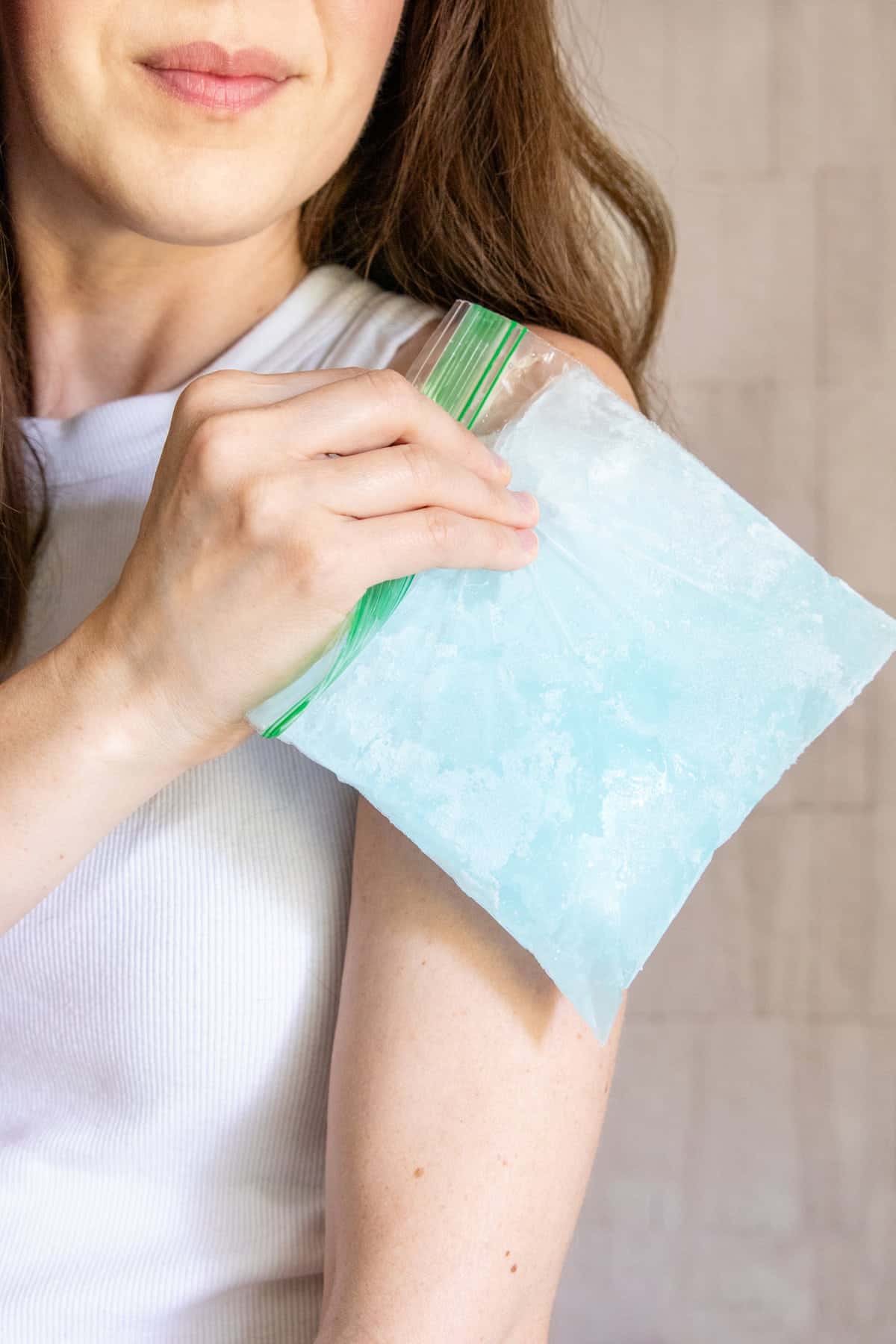
Unlike ice that’s fresh from the freezer, homemade gel packs stay soft when frozen, so they mold to the body and provide concentrated cold therapy no matter where it hurts. They’re also cost-effective and reusable, which means you can make a bunch, stash them in the freezer, and use them over and over!
Supplies
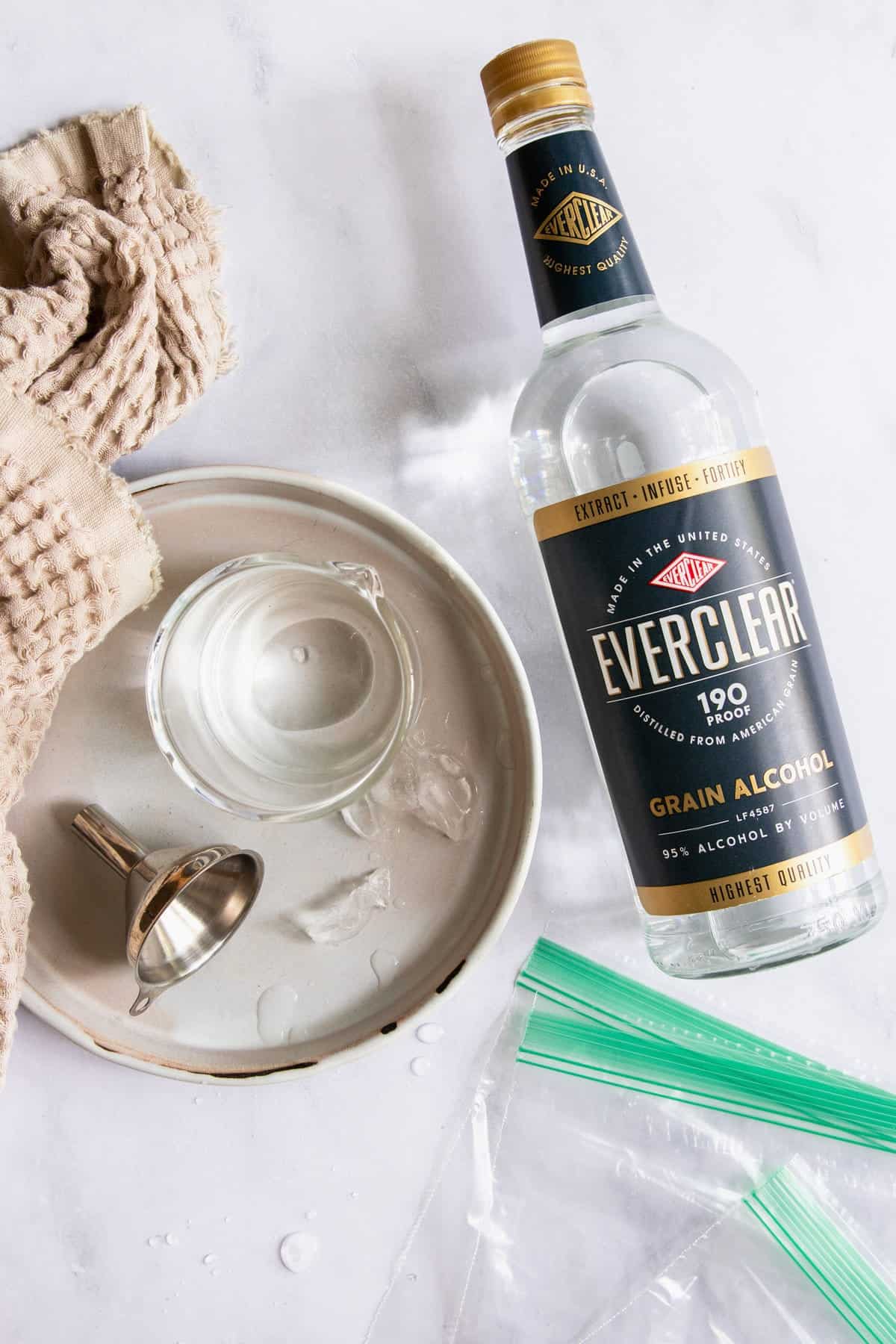
Everclear Grain Alcohol — The main ingredient in these DIY gel ice packs, grain alcohol, has a much lower freezing point than water. So, by combining grain alcohol with water and popping it in the freezer, you’re left with an ice-like gel that never quite freezes solid.
This flexibility is crucial when it comes to treating bumps and bruises because it allows the ice pack to conform to the shape of the body, ensuring better coverage of the affected area. The addition of Everclear Grain Alcohol also allows for even cooling throughout the gel, so you’re not left with any hot spots that may damage the skin.
The only other items you need are:
- Tap water
- Freezer bag (the higher quality, the better)
- Food coloring (optional)
See the recipe card below for quantities.
Instructions

Prepare the plastic bag: Select a zip-top plastic bag that is strong and leak-resistant. A freezer-safe bag is preferred. Make sure it’s large enough to hold the amount of ice pack you want.
Mix the gel solution: Combine equal parts of water and grain alcohol in a measuring cup. Everclear prevents the water from freezing completely solid and makes the gel more pliable, even when frozen.

Add food coloring: While it’s not necessary, now’s a great time to add a few drops of food coloring. This may help prevent other family members from thinking they’re edible and mistakenly using your ice packs.
Pour the solution into the bag: Carefully pour the gel solution into the bag until it’s about ⅔ full. Don’t overfill the bag; leave some space for the solution to expand when it freezes.
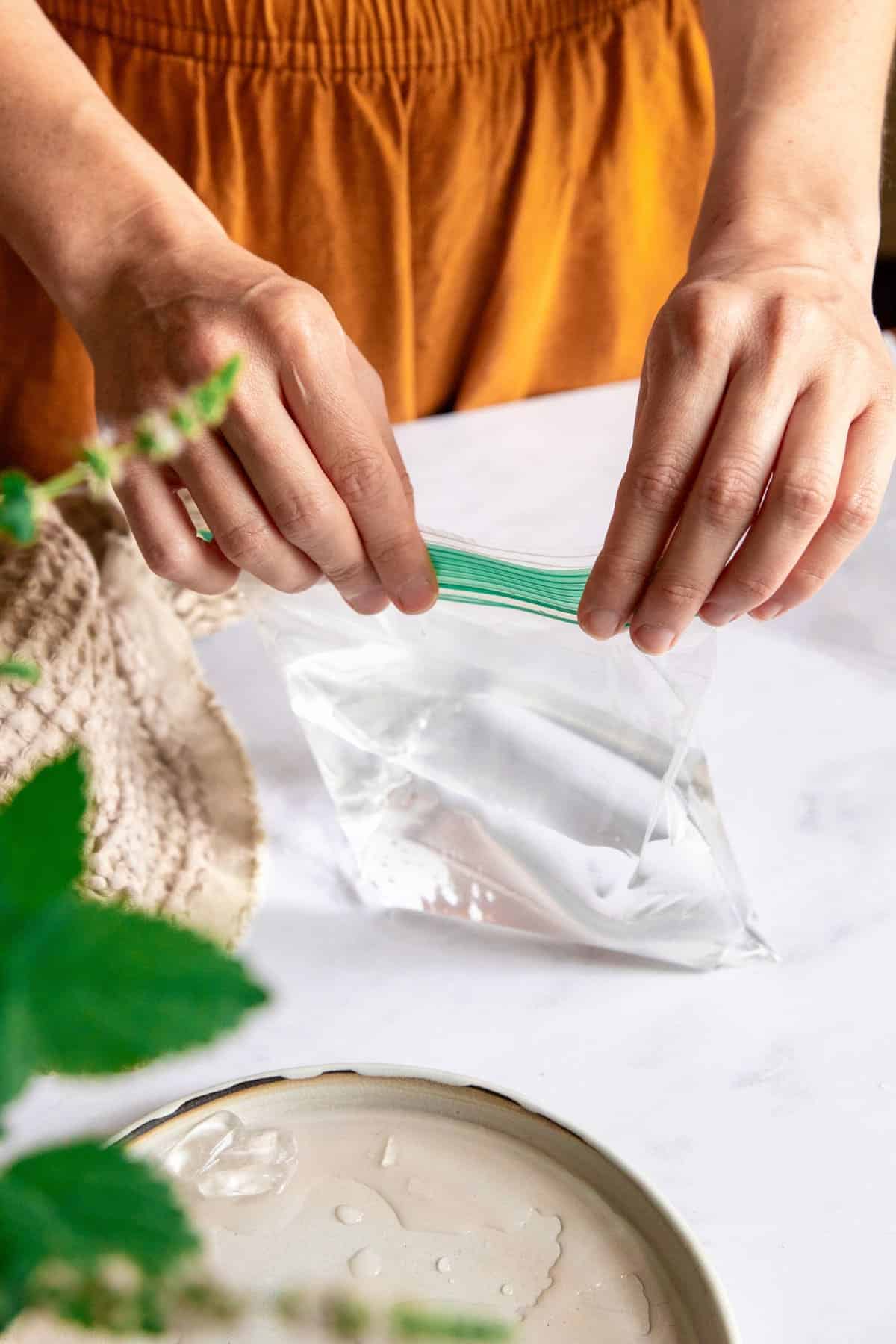
Seal the bag: Squeeze out any excess air from the bag and then securely seal the zip-top.
Test for leaks: Before placing the bag in the freezer, it’s a good idea to double-check for any leaks by gently squeezing the bag and watching for any liquid seeping out.
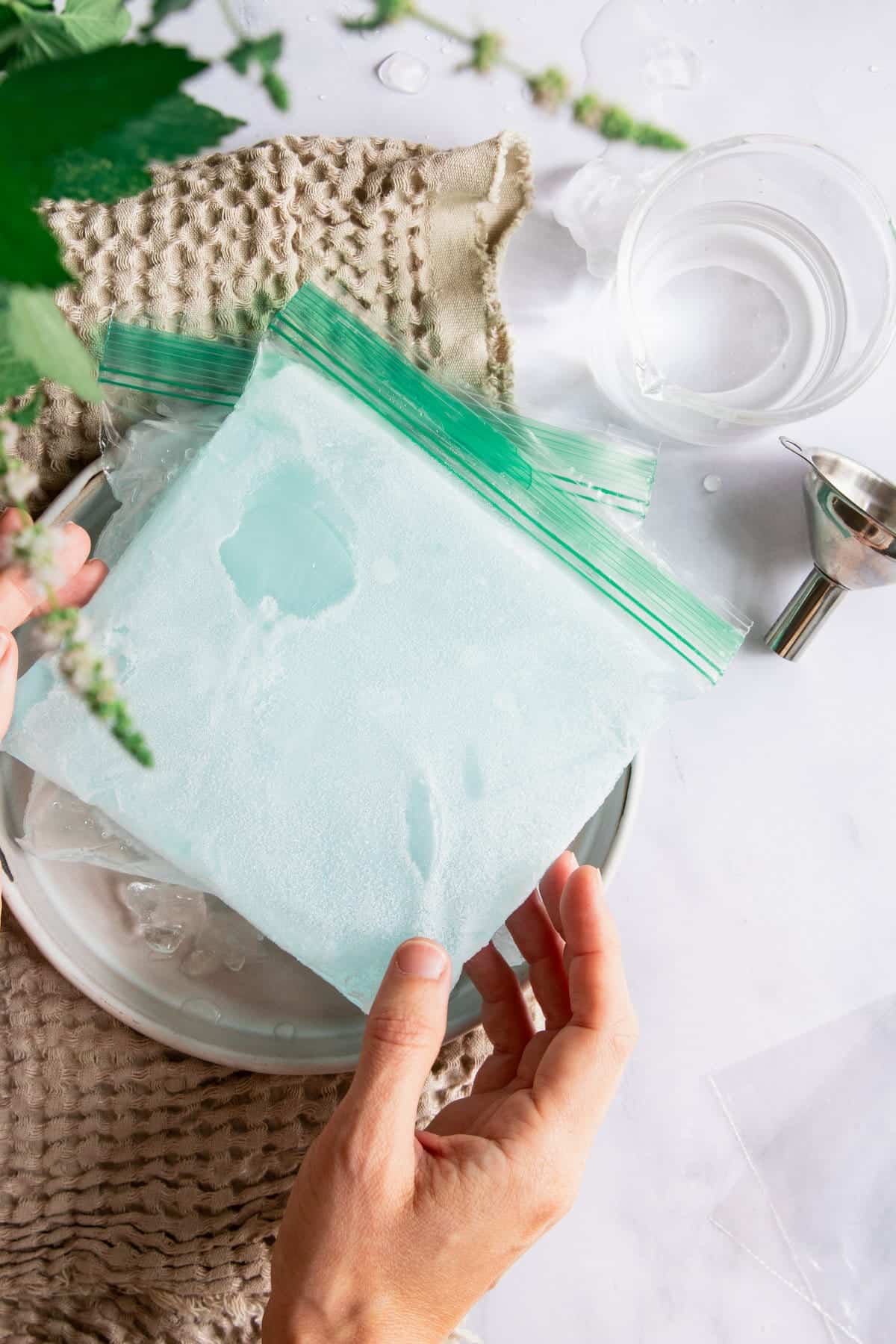
Freeze the bag: Lay the filled and sealed bag flat in the freezer. Allow the bag to freeze completely, which typically takes a few hours.
The time required will vary based on the size of the gel pack and the temperature and contents of your freezer, but it usually takes a few hours.
Hint: You can always make and freeze a couple of ice packs. And if you’re not happy with the consistency, let them thaw out before adding more water or grain alcohol until they’re exactly how you like them.
Variations
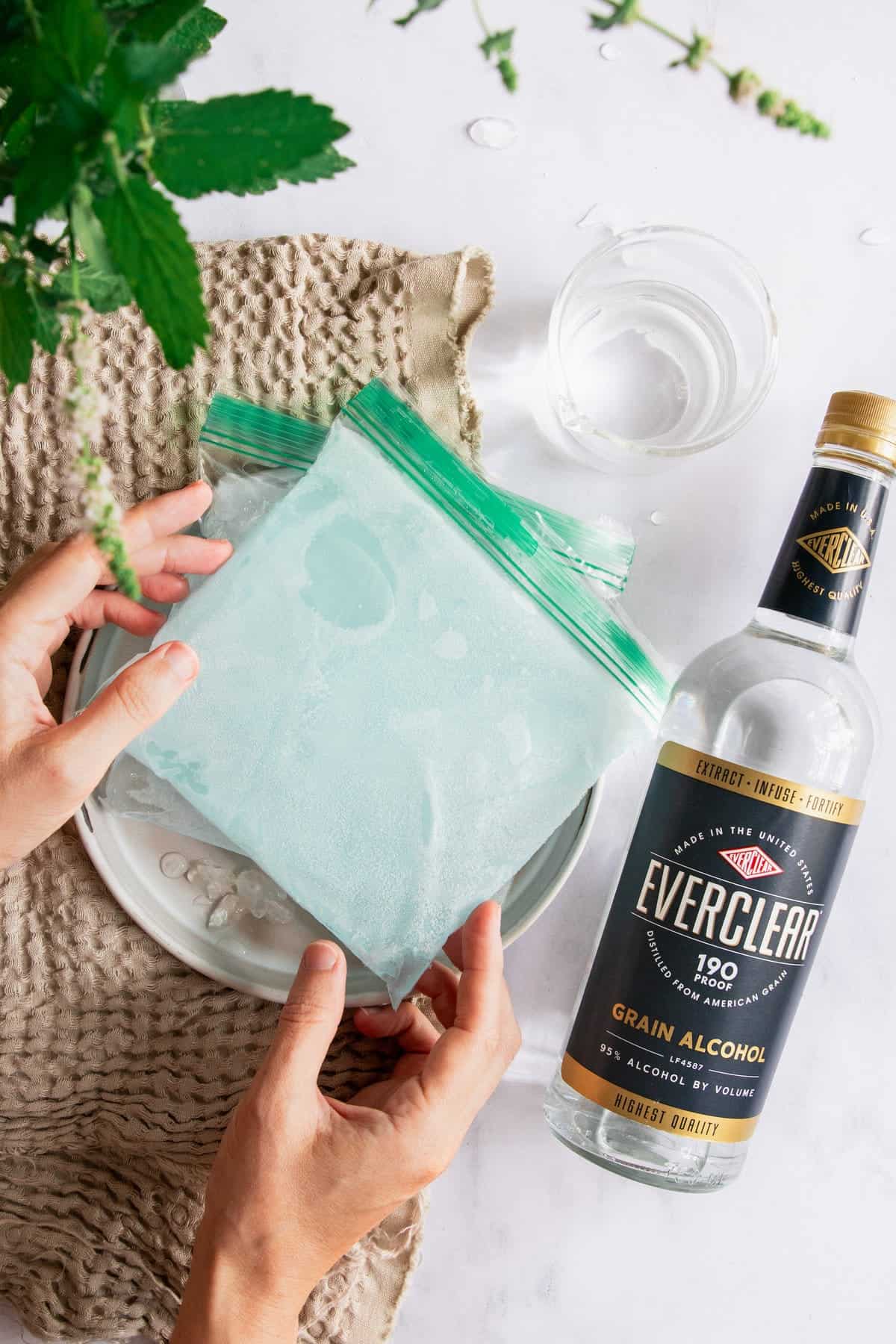
- Softer gel — If you prefer your packs to be more gel-like, you may want to go as high as 2 parts Everclear to 1 part water.
- Small packs — While I prefer using quart-size bags for ice packs, you can really use any size you like. Smaller snack bags may be ideal for fingers, wrists, or other delicate spots.
- Large packs — Large bags are great for the abdomen, thighs, and back. Simply scale the recipe up or down depending on the size of bag you choose.
You can also use Everclear to make reusable cold eye packs to reduce swollen, puffy eyes!
Using Gel Ice Packs

Let thaw for a few minutes: Before using, remove the ice pack from the freezer and allow it to sit for a few minutes. This makes the gel more pliable and comfortable to use.
Wrap in a soft towel: Never apply a frozen gel ice pack directly to your skin, as it may cause frostbite or skin damage. Always wrap the gel pack in a cloth or towel before applying it to the affected area. If you would like to apply the gel pack directly to the skin, then I recommend storing it in the refrigerator instead of the freezer so it’s not as cold.
Apply in short intervals: Use the gel ice packs for the recommended duration, usually around 15 to 20 minutes at a time, with breaks in between. This prevents skin damage and ensures proper blood flow to the area.
Re-freeze after use: After each use, return the gel ice pack to the freezer promptly. Make sure it’s lying flat and sealed properly to prevent leaks.
Replace when they start to wear out: Over time, your gel ice packs may become less effective. If you notice that a gel pack no longer provides sufficient cooling or you see any rips in the bag, consider making a new one.
FAQ
You can also use rubbing alcohol (isopropyl alcohol), but grain alcohol is often available at higher concentrations and makes a softer gel texture.
It usually takes a few hours for the gel ice pack to freeze completely in a standard household freezer. Placing the pack flat in the freezer helps the solution freeze evenly.
Yes, you can reuse the gel ice pack as long as it remains intact and doesn’t leak. Regularly inspect the pack for leaks or damage. If you notice any issues, it’s best to discard it.
Yes, the gel ice pack is safe for use on the skin. However, it’s recommended to wrap the pack in a thin cloth or towel before applying it to prevent frostbite or skin discomfort from direct contact with the cold surface.
If the gel ice pack becomes damaged or you no longer need it, you can dispose of it by emptying the contents into a sink, flushing it with water, and then disposing of the bag in your regular trash.
Homemade Gel Ice Pack Recipe
Materials
- 1 cup Everclear Grain Alcohol
- 1 cup water
- 2 8-oz plastic baggies
Instructions
- Start by pouring the water into a clean measuring cup. Then add the Everclear Grain Alcohol.
- Add 3-4 drops of food coloring and stir.
- Carefully pour the alcohol-water mixture into the bag until it’s about ⅔ full.
- Squeeze out any excess air from the bag as you seal it to ensure the gel mixture is in contact with all sides of the bag.Lay the filled and sealed bag flat in the freezer. Allow the ice pack to freeze completely. The time required will vary based on the size of the gel pack and the temperature and contents of your freezer, but it usually takes a few hours.
- When it thaws, place the ice pack back in the freezer to refreeze.




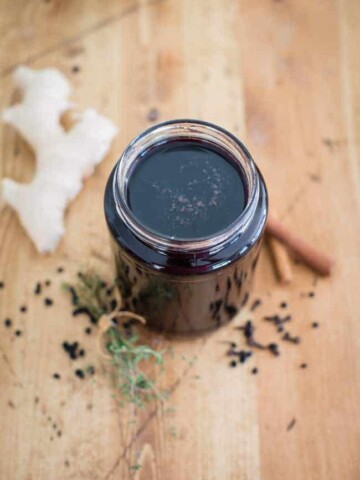


Leave a Comment